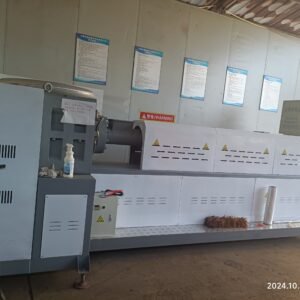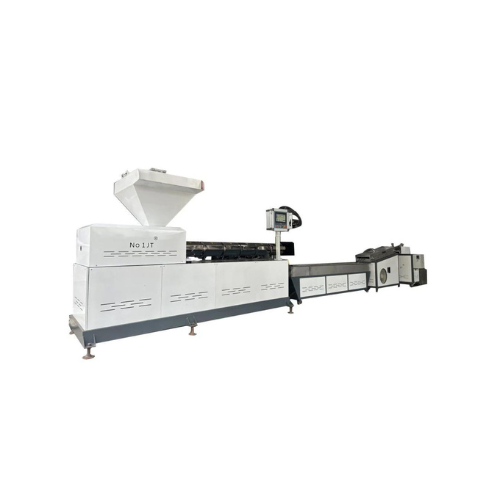
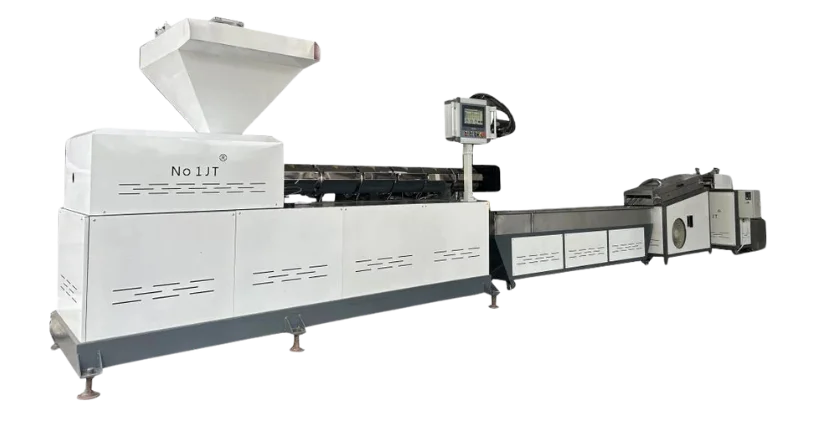
High Quality Plastic Recycling Machine Recommendation
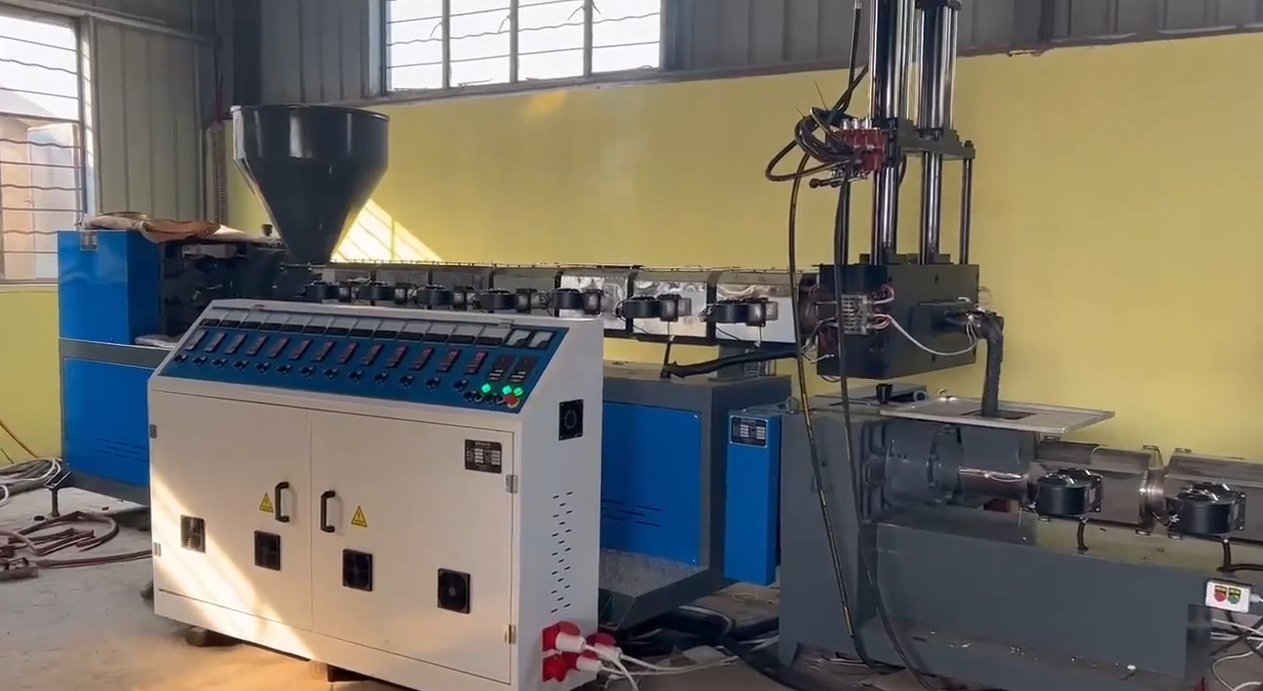
Efficient Recycling
Our plastic recycling machines use advanced technology to effectively process different types of waste plastics such as PE, PP and PVC. These plastic recycling systems involve breaking down various types of plastics, especially PET, then washing and cutting them into small pieces that can then be melted and reused to make new products.
Automated Operation
Our machines are equipped with PLC touch screen control system, which is very convenient to use. In addition, they can run fully automatically, which helps to greatly reduce labor costs.
Durability
The key components of our machines are made of strong materials, so they are resistant to wear and have a long service life.
High Output
Our machine models have production capacities ranging from 100 kg/h to 1000 kg/h, thus meeting the needs of companies of all sizes.
Plastic Recycling Machine Manufacturer Introduction – JianTai
JianTai Plastic Machinery Co., Ltd. is a renowned manufacturer specializing in the production of advanced plastic recycling machinery. Based in Zhejiang, China, JianTai has established itself as a leader in the field of plastic machinery, leveraging over 20 years of experience to deliver high-quality and customized solutions to clients worldwide.
Core Competencies and Offerings
- Customized Solutions: JianTai excels in providing tailored machinery solutions that meet the unique needs of each client. Whether it’s standard equipment or bespoke configurations, the company ensures optimal production efficiency by closely collaborating with customers to understand their specific requirements and production environments.
- Innovative Technology: The company is committed to technological innovation, featuring state-of-the-art machinery that incorporates advanced extrusion and pelletizing technologies. This includes a sophisticated double-stage pelletizing system that enhances the uniformity and quality of recycled plastic granules, ensuring superior product consistency.
- Environmental Sustainability: JianTai places a strong emphasis on sustainability, offering machines that significantly reduce energy consumption and environmental impact. Their latest models include energy-saving features that cut energy use by over 20% compared to traditional machines, supporting global sustainability goals and promoting a circular economy.
- Global Reach and Support: With a robust after-sales service network, JianTai provides comprehensive support to ensure smooth operation of their machinery globally. This includes customizable features to accommodate different regional electrical standards and a dedicated team of engineers available for technical assistance worldwide.
Product Range
JianTai offers a diverse range of plastic recycling machines designed for various scales of operation, from compact models suitable for small-scale facilities to high-capacity machines for large manufacturing plants. Their machines are capable of processing a wide variety of plastic materials, including PE, PP, PVC, and PET, making them highly versatile and adaptable to different industrial needs.
Commitment to Quality
Quality is at the forefront of JianTai’s manufacturing process. The company employs stringent quality control measures, from material selection to the final stages of production, ensuring that each piece of equipment is reliable and long-lasting. This dedication to quality is reflected in their use of high-grade materials and cutting-edge technologies, which together ensure the durability and efficiency of their machines.In summary, JianTai Plastic Machinery Co., Ltd. stands out as a premier provider of plastic recycling solutions, combining innovation, customization, and sustainability to meet the evolving needs of the global market.
The Right Solution For Every Plastic Material
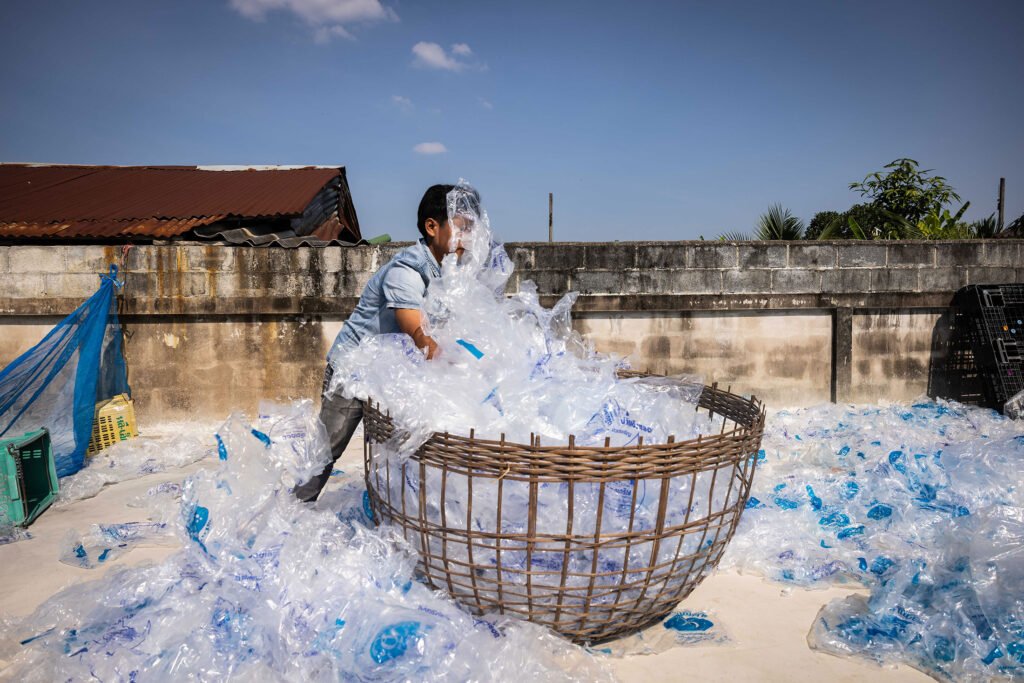
Plastic collection
To start the recycling process, it is important to collect plastic waste of the same material. This helps make the recycling process more efficient and effective.
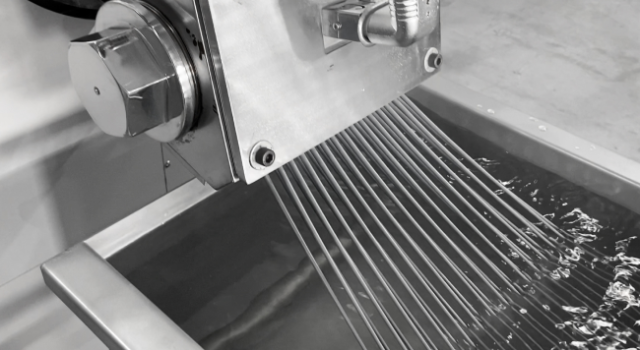
Plastic recycling extrusion
We use a water strand plastic extrusion process to efficiently convert plastic waste into high-quality pellets.
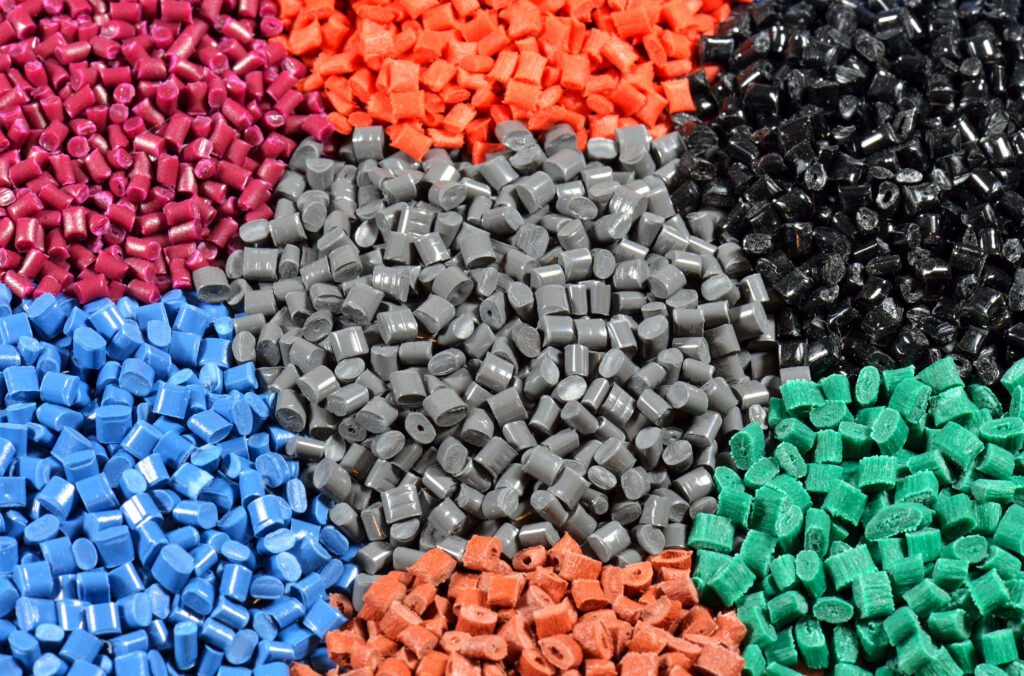
Plastic pellets complete regeneration
Once you have collected the plastic pellets, don’t forget to dry them thoroughly before storing them. This will help preserve the quality and prevent any potential problems with future use.
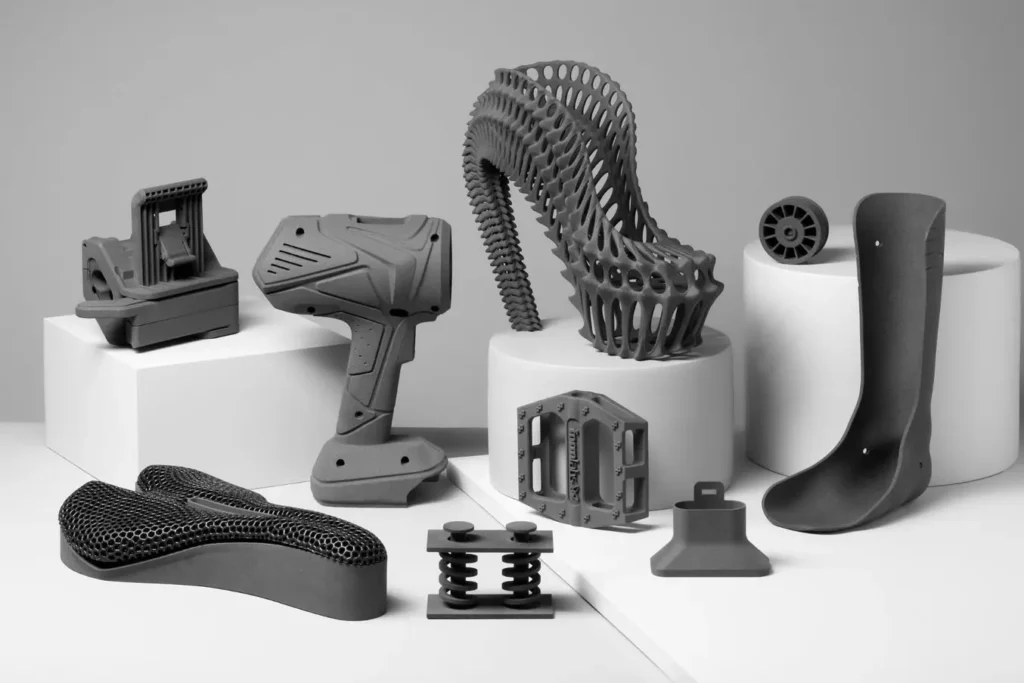
Conversion of plastic pellets into products
Congratulations! You have successfully transformed plastic waste into a finished product. This is a big step towards sustainable production and reducing waste. Keep up the good work!
More about plastic recycling machines video case
Double Stage Plastic Recycling Machine
The solution of using sub-master machine allows the plastic pellets to reach a better level.
Single Screw Plastic Recycling Machine
With a single screw host, you can do the most efficient things at a cheaper price.
What is a plastic recycling machine?
A plastic recycling machine is a specialized piece of equipment designed to process and convert waste plastics into reusable raw materials. These machines play a crucial role in managing plastic waste and promoting sustainability by reducing environmental pollution and conserving resources.
Key Functions of Plastic Recycling Machines
- Collection and Sorting: The recycling process begins with collecting and sorting plastic waste by type and color. This step ensures that only recyclable materials are processed.
- Crushing and Shredding: The sorted plastics are then crushed or shredded into smaller pieces or flakes. This is achieved using machines like granulators and shredders, which reduce the size of the plastic to facilitate further processing.
- Washing and Drying: The crushed plastic is washed to remove impurities such as dirt, labels, and adhesives. After washing, the plastic is dried to remove moisture, preparing it for the next stage.
- Melting and Extrusion: The clean and dry plastic flakes are melted and extruded into pellets or sheets. This process involves heating the plastic to its melting point and then shaping it into a form that can be easily reused in manufacturing new products.
- Pelletizing: The final stage involves converting the melted plastic into pellets. These pellets are uniform in size and can be used as raw material for producing new plastic products.
Types of Plastic Recycling Machines
- Granulators and Shredders: Used for cutting plastic into smaller pieces.
- Washing Lines: Clean the plastic flakes to remove contaminants.
- Pelletizing Machines: Convert plastic flakes into pellets.
- Micronizers: Grind plastic resins into powder form for specific applications.
Benefits of Plastic Recycling Machines
- Environmental Impact: They help reduce plastic waste in landfills and oceans, mitigating pollution and conserving natural resources.
- Economic Advantages: Recycling plastic is more cost-effective than using virgin materials, reducing production costs for businesses.
- Sustainability: By facilitating the recycling of plastics, these machines support a circular economy, promoting the sustainable use of resources.
Plastic recycling machines are essential tools in the fight against plastic pollution, offering a sustainable solution to manage plastic waste effectively and efficiently.
What are the main components of a plastic recycling machine?
The main components of a plastic recycling machine include:
- Shredders: Used to break down large pieces of plastic into smaller flakes, preparing them for further processing.
- Washing Lines: Essential for cleaning plastic waste to remove contaminants, ensuring high-quality recycled materials. These can be specialized for different types of plastics, such as rigid or film washing lines.
- Dryers: Remove moisture from plastics before they are melted or extruded, improving the quality of the recycled materials and reducing energy consumption.
- Separators: Sort plastics based on properties like density and size, which helps in separating different types of plastics for recycling.
- Extruders: Melt the cleaned plastic and form it into new products or pellets.
- Pelletizers: Cut the melted plastic into small, uniform pellets that can be easily transported and re-processed.
- Conveyors: Facilitate the movement of materials between different stages of the recycling process, often equipped with metal detectors for added safety.
- Melt Filters: Remove impurities from the molten plastic to ensure the quality and consistency of the recycled pellets.
These components work together to efficiently recycle plastic waste, transforming it into reusable materials while minimizing environmental impact.
How do separators contribute to the efficiency of plastic recycling machines?
Separators play a crucial role in enhancing the efficiency of plastic recycling machines by sorting and separating different types of plastics and contaminants based on various properties. Here are some ways separators contribute to this efficiency:
- Density-Based Separation: Density separators, such as sink float separation tanks, are used to sort plastics based on their density. This method is particularly effective for separating materials like polypropylene (PP) and polyethylene (PE) from mixed plastic streams, as these materials have relatively low densities compared to other plastics.
- Size and Shape Sorting: Disk separators and trommels are designed to separate materials based on size and shape. These machines can effectively sort a wide variety of material mixtures, including plastics, paper, and metals, by removing smaller contaminants and ensuring that only the desired materials proceed to the next stage of processing.
- Air Separation: Air separators, such as zig-zag air classifiers, remove lightweight contaminants from heavier plastics. This is particularly useful in recycling lines for materials like HDPE and PET bottles, where paper and cardboard need to be separated from the plastic stream.
- Magnetic and Eddy Current Separation: Advanced separators use magnetic and eddy current technologies to remove metal contaminants from plastic streams. These machines can separate ferrous and non-ferrous metals, ensuring a cleaner plastic output that is more efficient to process and more marketable.
By effectively sorting and separating materials, separators reduce contamination and improve the quality of recycled plastics. Consequently, this leads to higher efficiency in the recycling process, as the materials become more uniform and require less additional processing. Ultimately, this enhancement boosts the profitability and sustainability of plastic recycling operations.
How do plastic recycling machines handle different types of plastic contaminants?
Plastic recycling machines handle different types of plastic contaminants through a series of processes designed to clean and separate impurities from the recyclable plastics. Here are the main methods used:
- Washing Systems: These systems are crucial for removing contaminants such as dirt, labels, adhesives, and other impurities from plastics. The process typically involves feeding shredded or crushed plastic materials into a washing system where water and detergents are used to thoroughly clean the plastics. Agitation from rotating paddles or jets helps dislodge dirt particles, while chemicals may be added to dissolve adhesives or remove stubborn labels.
- Separation Techniques: After washing, various separation techniques are employed to further purify the plastics. These include centrifugal force, hydrocyclone separators, or simple settling tanks where heavier contaminants sink to the bottom while lighter plastics float for collection. These methods help ensure that the cleaned plastics are free from residual impurities.
- Size Reduction: Shredders and granulators are used to cut plastics into smaller pieces, which facilitates easier washing and separation. Multi-shaft shredders perform scissor-like cutting and can handle moderately dirty materials, while single-shaft shredders and granulators provide more precise size reduction, making it easier to remove contaminants during subsequent processes.
- Dry and Wet Separation Methods: Wet methods, such as float tanks, separate materials based on density, while dry methods like air classification sort plastics based on the ratio of flake surface area to mass. These processes help remove non-reusable materials and further clean the plastic flakes.
By employing these methods, plastic recycling machines effectively handle various contaminants. As a result, they ensure that the resulting recycled materials are of high quality and suitable for reuse in manufacturing new products.


